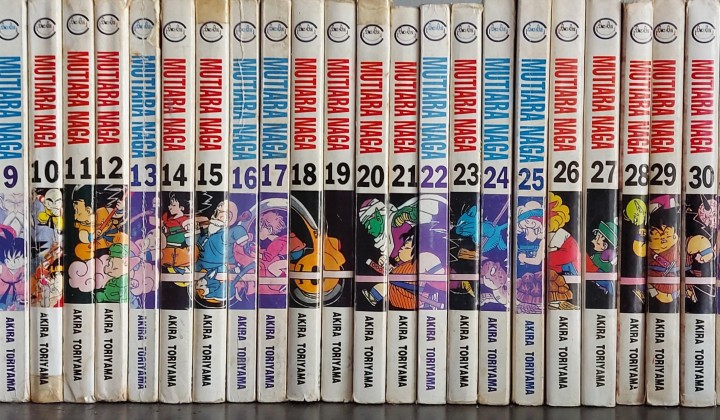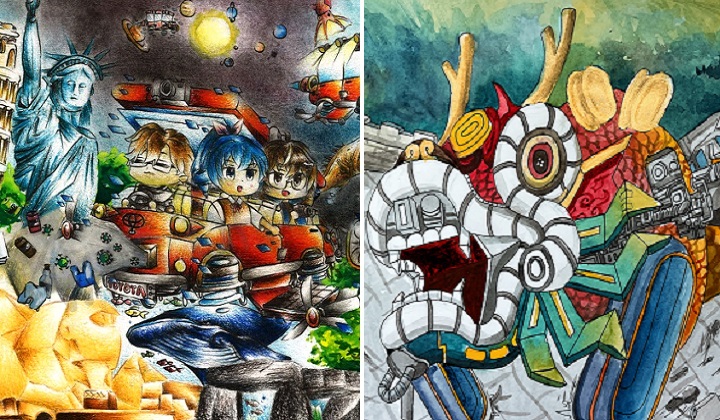The Lasting Impact Of Akira Toriyama’s Dragon Ball On Malaysian Fans
The Dragon Ball series has profoundly impacted Malaysian culture. It has helped shape the values and beliefs of a generation of Malaysians and promoted literacy and creativity in the country.

Subscribe to our FREE Newsletter, or Telegram and WhatsApp channels for the latest stories and updates.
Akira Toriyama, the legendary Japanese manga artist and creator of the globally beloved Dragon Ball series, passed away at the age of 68 due to an acute subdural hematoma.
While his death has left fans worldwide in mourning, his legacy continues to resonate deeply with Malaysian fans despite the language barrier.
Dragon Ball, which debuted in 1984, has transcended cultural boundaries and language differences, captivating audiences in Malaysia and beyond.
The series follows the adventures of Son Goku, a young warrior with superhuman strength, as he searches for the magical Dragon Balls and battles powerful adversaries to protect Earth.
The universal themes of friendship, perseverance, and the triumph of good over evil have struck a chord with Malaysian fans, regardless of their ethnic or linguistic background.
The series’ iconic characters, such as Goku, Vegeta, and Piccolo, have become household names and role models for generations of Malaysians.
Dragon Ball’s Enduring Legacy: A Kamehameha-Sized Impact on Malaysian Pop Culture
One of Dragon Ball’s most recognizable and beloved aspects is Goku’s signature move, the “Kamehameha”.
This powerful energy blast, named after the Hawaiian King Kamehameha I, has become a cultural phenomenon.
Malaysian fans have embraced the Kamehameha, often mimicking the iconic pose and shouting the attack’s name during playful encounters or friendly competitions.
The move’s popularity has even been included in Malaysian popular culture, with references appearing in local television shows, advertisements, and social media.
Many Malaysians grew up watching the Dragon Ball series on free-to-air television channels like NTV7, which aired the anime in Malay.
The series’ accessibility allowed it to reach a wide audience, further solidifying its place in Malaysian pop culture.
The shared experience has created a sense of nostalgia and camaraderie among fans, who fondly remember the excitement of tuning in to catch the latest episodes and discussing them with friends and family.
Slimes, Swords, and Strategies: Dragon Quest’s Thriving Malaysian Fandom
In addition to his work on Dragon Ball, Toriyama has also made significant contributions to the world of video games, particularly through his involvement in the Dragon Quest series.
Toriyama has been the main character designer for the Dragon Quest franchise since its inception in 1986, creating the iconic looks of heroes, monsters, and NPCs that have become synonymous with the series (Kalata, 2008).
Dragon Quest, known as Dragon Warrior in North America until 2005, is a hugely popular role-playing game (RPG) series that has sold over 76 million copies worldwide as of 2019.
The series has also gained a significant following in Malaysia, with many gamers drawn to its engaging storylines, memorable characters, and Toriyama’s distinctive art style.
The popularity of Dragon Quest in Malaysia is evident through the strong sales of the games and the enthusiasm of local fans who actively participate in online communities, discuss strategies, and share their experiences with the series.
I just found out that Dragon Quest Scan Battlers has an English version in Malaysia and they even have the cards in English, wow. #DragonQuesthttps://t.co/nTfjRCaM4B pic.twitter.com/Rhfmu9Zb9R
— sackchief 🍂 (@sackchief) December 20, 2019
A Legacy Beyond Time, Bound by Language
Dragon Ball stands out for its unparalleled influence and enduring legacy.
The series’ longevity, spanning over three decades, and its ability to appeal to fans of all ages have cemented its place as a cultural touchstone in Malaysia.
One key factor contributing to Dragon Ball’s accessibility and popularity in Malaysia is the manga’s availability in Malay, translated as “Mutiara Naga” (Dragon Pearl).
The localized editions, published by Comics House and Tora Aman, have allowed Malaysian fans to enjoy Toriyama’s work in their native tongue.

This has broadened the series’ reach and fostered a deeper connection between the characters and the Malaysian audience.
Interestingly, even though the Malay editions of the Dragon Ball manga are no longer in print, fans can still acquire them through online platforms like Carousell.
This secondhand market for localized manga showcases the enduring demand and passion for the series among Malaysian fans, who are eager to own a piece of this cultural phenomenon in their native language.
Malaysia’s Mark on Manga: How Lensa Film Helped Shape the World of Dragon Ball and Beyond
In an intriguing chapter of animation history, a Malaysian company played a pivotal role in making the iconic Dragon Ball series, among other notable projects.
This company, Lensa Film, formerly known as Lensamation, was involved in a significant collaboration with Japan’s Toei Animation.
From the mid-1980s to the 1990s, Lensa Film was tasked with “clean-up” and “painting” works for Japanese animation drawings onto cells, contributing to the production of Dragon Ball, Transformers, Sailor Moon, and more.
This collaboration marked an important milestone in the development of Malaysia’s local animation industry.
It showcased Malaysian talent’s global reach and impact in the intricate animation production process.
Tuan puan pernah baca komik Dragon Ball? Yang watak utamanya seorang lelaki berambut pacak bernama Son Goku.
— KualaLumpurWBC (@KualaLumpurWBC) March 4, 2021
Mahu dengar satu fakta yang mampu meletupkan minda? 🤯
Animasi awal Dragon Ball sebenarnya dihasilkan di Malaysia! pic.twitter.com/rIqnvHpzi7
Unleashing a Cultural Fusion Wave in Malaysia
Dragon Ball’s influence extends beyond entertainment.
The series has also inspired Malaysian fans to embrace the values and life lessons it imparts.
Goku’s unwavering determination, loyalty to his friends, and commitment to self-improvement have resonated with fans, encouraging them to face challenges head-on and strive for personal growth.
In a country as diverse as Malaysia, where multiple languages and cultures coexist, Dragon Ball’s universal appeal is a testament to storytelling’s power to unite people across boundaries.
Toriyama’s creation has entertained, inspired, and connected Malaysians in a way few other works have achieved.
While other Japanese anime series like Doraemon, Naruto, and Slam Dunk have also found success and popularity in Malaysia, Dragon Ball’s impact remains unparalleled.
Its enduring legacy, multi-generational appeal, and ability to transcend cultural and linguistic barriers have solidified its place as a cornerstone of Malaysian popular culture.
As Malaysian fans bid farewell to the visionary behind Dragon Ball, they will continue to cherish the memories, friendships, and life lessons the series has given them.
Whether through rewatching the anime, revisiting the manga, or sharing their favourite moments and lessons learned from the series, fans will keep the spirit of Dragon Ball alive and ensure that Toriyama’s legacy continues to inspire and unite Malaysians from all walks of life.
Penulis Dragon Ball meninggal dunia, semesta seakan-akan berduka. Sebegitu berpengaruhnya Dragon Ball untuk dunia.
— namakumojo (@namakumojo10) March 9, 2024
RIP LEGEND, Akira Toriyama-sensei. pic.twitter.com/TsJn4BoDEa
Share your thoughts with us via TRP’s Facebook, Twitter, Instagram, or Threads.





